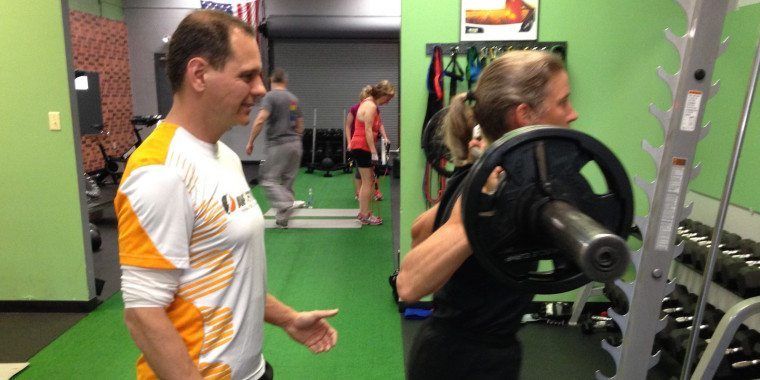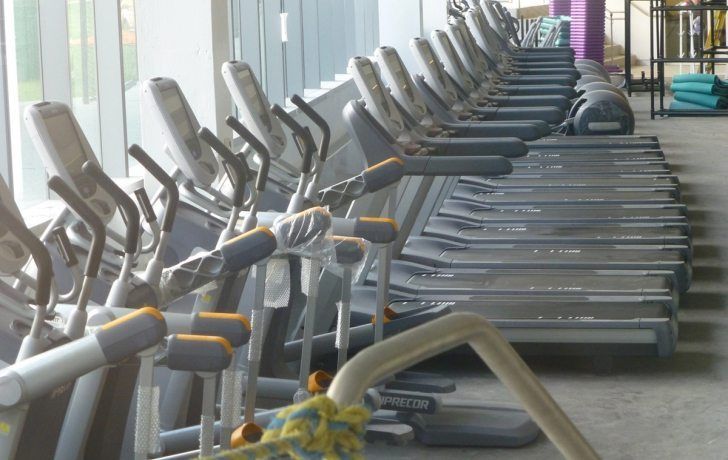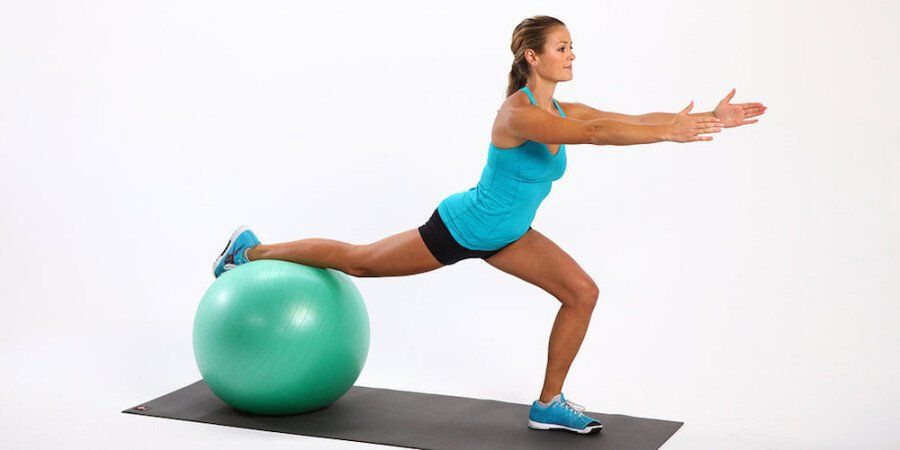Stability balls are a great tool to improve your core stability, muscular strength and endurance, balance, flexibility and functional fitness.
Developed in Italy in the 1960s and first used in rehabilitative therapy in Switzerland, stability balls can help anyone improve their fitness level; allow for a variety of exercises, both with and without external resistance; and can be used to overload your muscles.
And because the ball is unstable, the user has to actively engage the core muscles — abdominals, back muscles, hip flexors and extensors — giving those muscle groups a great bang for the time put in.
Safely using a stability ball
To increase your safety while using a stability ball, the American College of Sports Medicine recommends that you:
- Maintain the natural curves in your back while exercising.
- Increase your stability (as needed) by placing your feet on the floor should-width apart (or wider for better balance). Put a mat in front of the ball to act as a cushion in case you fall.
- Use a wall behind the ball to keep the ball from rolling out from underneath you, and to prevent you from falling directly onto the floor should the ball slip forward.
- Place chairs on either side of the to provide stability (if needed) while exercising in a seated position.
- Always use good movement technique and control.
- Remember to breathe throughout each exercise.
- Avoid bouncing or fast movements of your joints while on the ball as they reduce your control of the movement and increase your risk of muscle strain and joint sprain.
It is also important to listen to your trainer so you can follow a proper exercise progression to reduce your risk of injury and gain optimal training benefits. Once you are comfortable performing the exercises you can add movement of limbs or trunk, as well as external resistance with free weights, resistance bands or a medicine ball.
Keep progressing
As your core stability, balance and strength improve, you can achieve a progressive overload by challenging yourself in a number of ways, including:
- Practice transitions from one position to another.
- Make your base of support less stable by moving your feet or hands closer and farther away from the ball.
- Vary your position on the ball so it supports less of your body weight and you are lifting more weight against gravity.
- Add a dynamic balance challenge by adding movement on, over or around the ball with one or both limbs; increasing your volume of training; or using a larger stability ball.
A variety of benefits
Stability balls can be used in a variety of ways to help you achieve different aspects of fitness.
- Increase flexibility: Lie over the ball on your back to stretch your abdominal muscles, on your stomach to stretch back muscles or on your side to stretch abdominal oblique muscles.
- Increase muscle strength and endurance without external weight: Lie on your back on the ball and perform crunches. Perform push-ups with your knees, shins or feet on the ball.
- Increase muscular strength and endurance by using dumbbells or other external resistance: Perform chest presses, triceps extensions, flies or other exercises while sitting or lying on your back on the ball.
Stability balls have multiple benefits, including increasing core stability, static and dynamic balance, strength, flexibility and functional performance. You can perform an entire workout with a stability ball, or incorporate one as part of a well-rounded exercise program to effectively develop your core stability.












